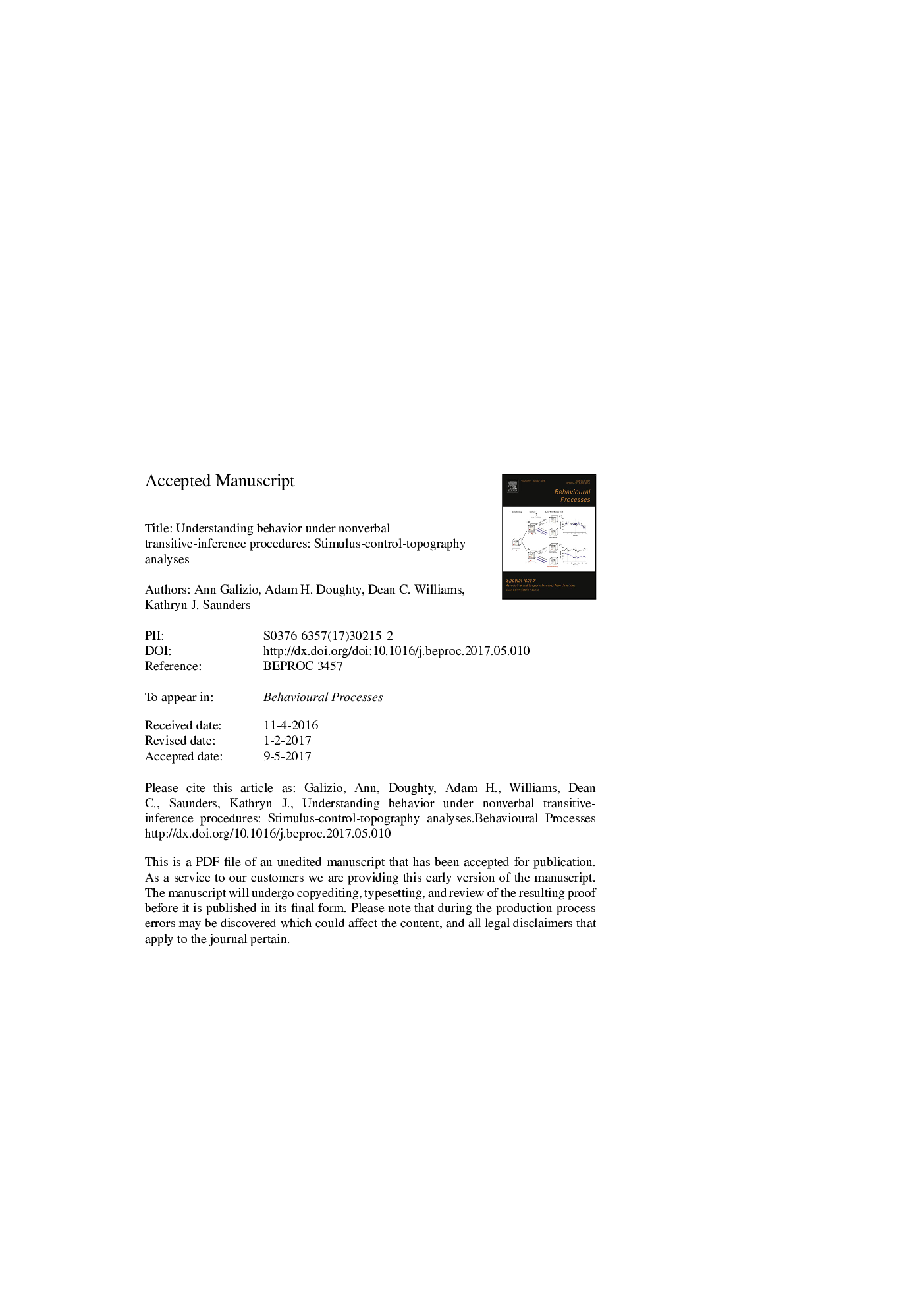| Article ID | Journal | Published Year | Pages | File Type |
|---|---|---|---|---|
| 5539791 | Behavioural Processes | 2017 | 50 Pages |
Abstract
Following training with verbal stimulus relations involving A is greater than B and B is greater than C, verbally-competent individuals reliably select AÂ >Â C when asked “which is greater, A or C?” (i.e., verbal transitive inference). This result is easy to interpret. Nonhuman animals and humans with and without intellectual disabilities have been exposed to nonverbal transitive-inference procedures involving trained arbitrary stimulus relations. Following the training of AÂ +Â B-, BÂ +Â C-, CÂ +Â D-, and DÂ +Â E-, B reliably is selected over D (i.e., nonverbal transitive inference). Such findings are more challenging to interpret. The present research explored accounts of nonverbal transitive inference based in transitive inference per se, reinforcement, such as value-transfer theory, and operant stimulus control. In Experiment 1, college students selected BÂ >Â G following the training of AÂ +Â B-, BÂ +Â C-, CÂ +Â D-///EÂ +Â F-, FÂ +Â G-, and GÂ +Â H- (where///signifies the omission of DÂ +Â E-). In Experiment 2, college students selected BÂ >Â G following the training of AÂ +Â B-, BÂ +Â C-, CÂ +Â D-///EÂ +Â F-, FÂ +Â G-, and GÂ +Â X- (where X refers to 10 stimuli that alternated across trials). In Experiment 3, college students selected GÂ >Â B following the training of YÂ +Â B-, BÂ +Â C-, CÂ +Â D-///EÂ +Â F-, FÂ +Â G-, and GÂ +Â X- (where Y and X refer to 10 stimuli, respectively, that alternated across trials). These findings are discussed in the context of operant stimulus control by offering an approach based in stimulus B typically acquiring only a select stimulus control topography.
Related Topics
Life Sciences
Agricultural and Biological Sciences
Animal Science and Zoology
Authors
Ann Galizio, Adam H. Doughty, Dean C. Williams, Kathryn J. Saunders,
